|
This is an old pet project of mine, to fill the gap in wargame supplies that still exist for 1/72 or 20mm ancient buildings. There s a large choice of terrain pieces in both 15mm and 25/28mm from several manufacturers nowadays, many of high quality, but so far very little if any is still available for 20mm. Of course there is much available for WWII, and Napoleonics, which are still the main period wargamers play in 1/72, but with the renaissance of ancients 1/72 plastics we're witnessing in recent years I would hope there will be the occasion to start to move also in this direction. Buildings like these can be used to represent the camp or a build up area in a conventional field battle game or play an even more central role in a skirmish or scenario game, for example by being the objective a player need to occupy and the other to defend.
This page is meant to present the preliminary drawings I've done so far for 20mm ancient buildings and to offer everyone a chance to comment and criticize, so please feel free to send your feedback in, either directly to me at or by posting on the best list dedicated to wargaming with 20mm plastic: DBLCHM@yahoo.com I doubt all these roughs may ever become actual models, and even if they do it will pass for sure a fairly long time before they are all released. Your opinions and preferences at this point will play a major part in determine what will go into production first! All models are meant to be cast in resin with small details and separate part in white metal. |
The first series is Ancient 'Celtic' buildings, taking this at the largest possible meaning, covering La Tene and all contemporary related cultures, and suitable for pretty much any population living in all continental Europe from the bronze through the iron age. Some of these are more suitable to some geographic arear than others, some are later or earlier than others, while some are traditional solid all-round designs that were unchanged for centuries. Historically we can start with the most classic of all bronze age village building, a type of hut for which there is loads of artistic and archeological evidence, especially in the Italian peninsula, and which is a direct derivation of prehistoric huts:

|
Another simple housing building more popular in the northern regions was the so-called "A" frame house, often built using roughly cut local stones where available:
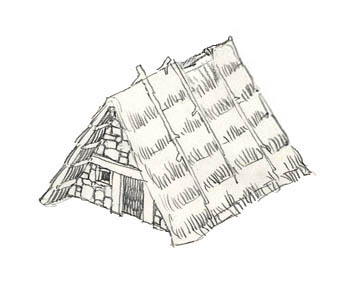
|
Alternatively the A frame structure was completed with wattle and daub walls, although when possible it still had stonework foundations and chimney:
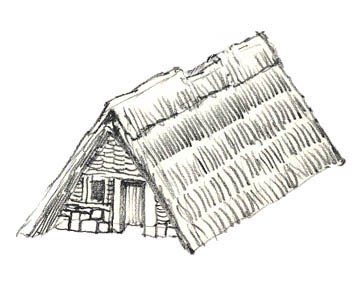
|
Another classic Celtic building was the roundhouse, which usually were large enough to accomodate several families:
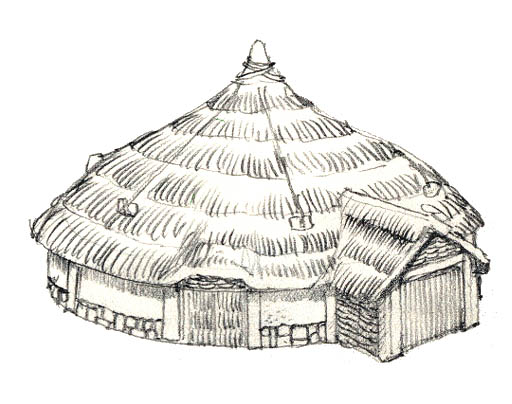
|
After the contact with the Romans squared corners became more common. In southern and Cisalpine Gaul, Spain, Illiria, Greece and in the North-Eastern Mediterrenean housing were often built over strong stonework foundations, I'm planning to make the stonework basement, the house itself and the roofing as separate modular elements to offer the widest possible range:
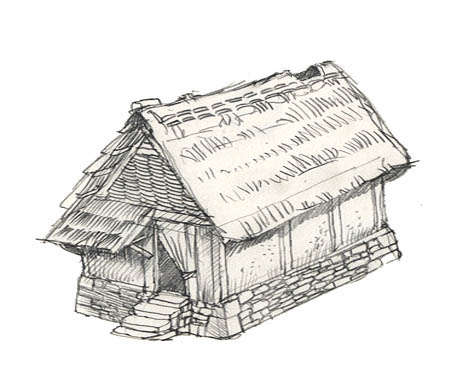
|
In Northern Central Europe it was common for tribes to build large housing that could accomodate several families:
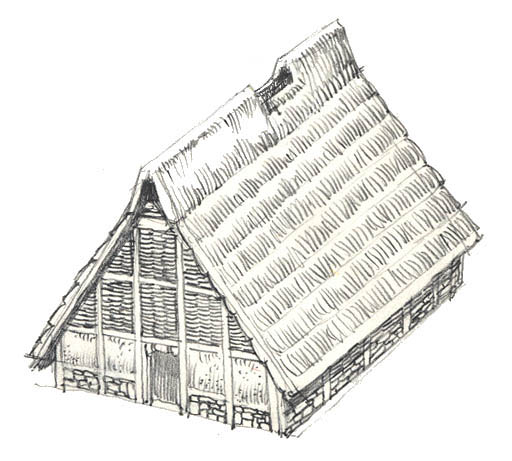
|
As well as housing in the celtic village there where many other 'service' buildings, including large warehouses to stock goods and supplies:

|
There were also specialized workshops like the lumbermill:
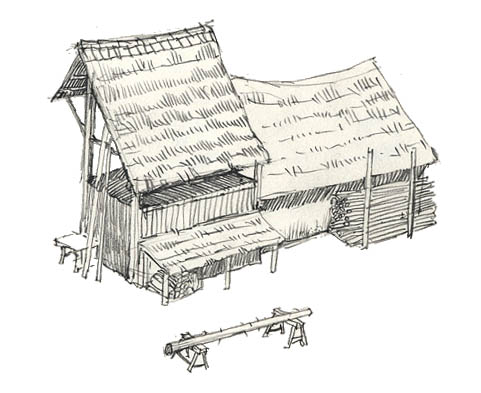
|
Celts were famous for their skill in working with metals and most villages had their own smelters and ironsmiths:
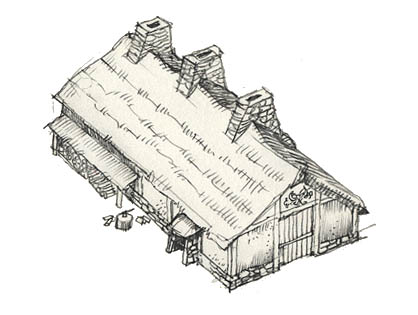
|
Even the smallest settlement would have had his own grain store, this is a classic Southern European design:
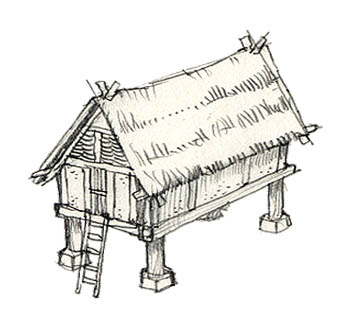
|
And of course a water well:
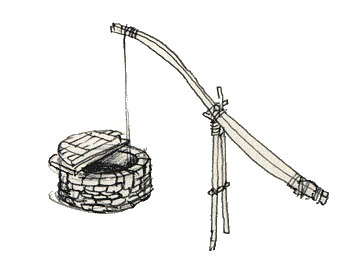
|
The series should also include a modular system of fortifications. The basic element is a single piece low earthwork embankment casted in resin (1). The frontage will be 60mm so as to be compatible with the 25mm scale element frontage in most rules, and to allow elements to be intermixed with the roman ones. The earthwork is completed by a separate woven fence (2) a wooden platform (3) and timber posts (4). The system should include also a much more substantial timber framed earthwork to be used for hillforts and siege type defences as well as broken down versions of all the above.
All these elements should be provided as well as in the straight version illustrated in curved sections for creating rounded perimeters (6). Ideally these should include a straight 90° corner piece, a 45° piece eight of which can be used to make a small Crannog (see below), a 22.5° piece that can be used to make a larger Crannog (10) or a small village and a 11.25° to make a very large village. All these can of course be combined to make different shapes.
This should be completed by a separate wooden tower (7) that can be used as gate or placed anywhere along the fortification and include a separate detachable roof piece.
The timber posts, platform and woven fences can also be assembled to create a jetty or a walkway to access a village across a protective ditch or a Crannog.
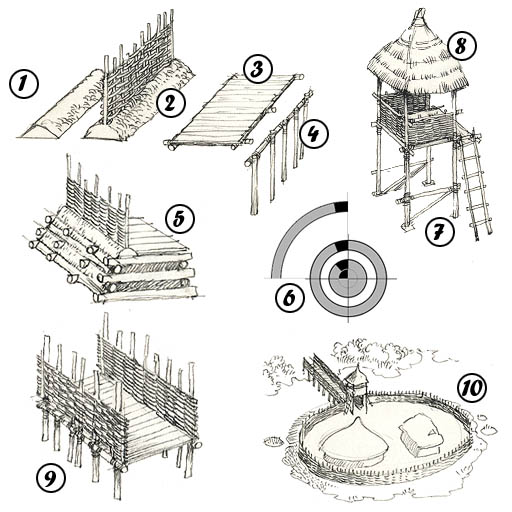
|
I'm also now thinking of making a stilt crannog model that would probably be available separately to be used as a small round house or in a kit including also 4x90° corner pieces (posts and platforms), 8x45° pieces (posts, platforms and optionally fences), 2xstraight pieces (posts, platforms and optionally fences for the walkway) and a small bonus log carved boat... :)
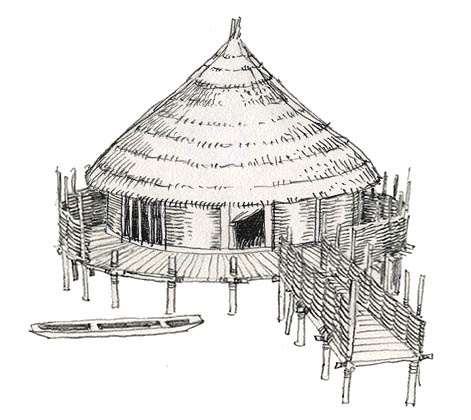
|
That's it for now, but I'm considering more buildings to be added to this series, including a boatshed, shipyard and boats/small ships, and a wooden bridge.
The second series is Ancient Roman buildings, starting with a modular system of fortifications:
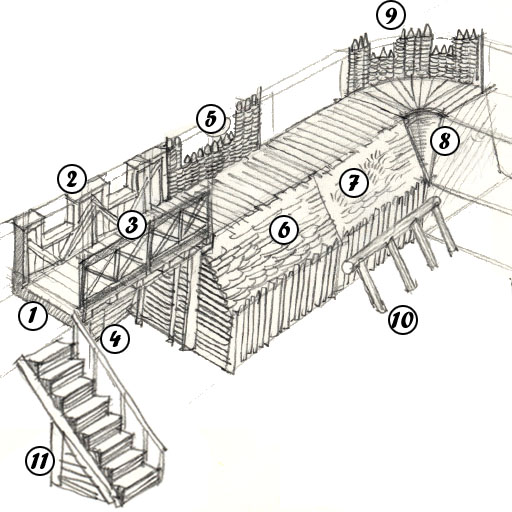
|
The core element is a single piece earthwork embankment casted in resin (7). The frontage will be 60mm so as to be compatible with the 25mm scale element frontage in most rules and to allow elements to be intermixed with the celtic ones. The embankment is completed by separate palisade (5) and optional reinforcements (10). The system includes also a round corner piece (8) with its own palisade (9) and a gate. The gate is actually a small subsystem which consist of a base formed by two truncated embankment elements (16) left and (6) right, which leave a full module frontage (60mm) gap, a shortened palisade (15) and a wooden barred gate to close the gap itself (4). This is completed by a separate wooden superstructure to defend the gap, which include a pontoon (1) a frontal parapet (2) and an inner balaustrade (3). A separate access staircase model (11) can be positioned pretty much anywhere along the embankment.
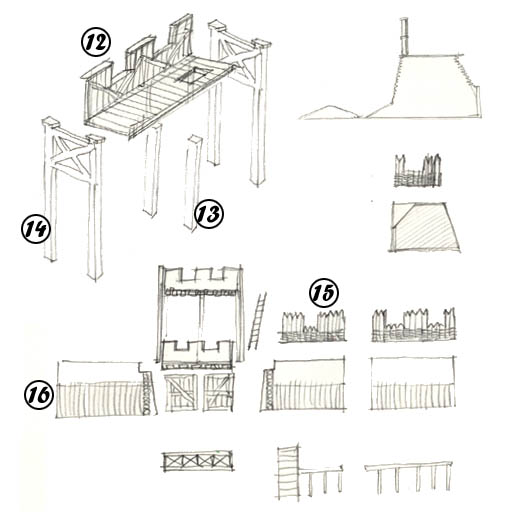
|
| The basic fortification can be expanded by adding new modular elements, for example a wooden tower would consist of a new pontoon element with an access port (12) two side supports (14) and two central posts (13). Towers like this although designed to fit over the gates can be positioned anywhere along the fortification bulwark. Additional modular elements, like alternative palisade elements, deeper embankment modules to house artillery pieces, etc. are all being considered, as well as complementary models, like legionary march camp stakes palisade, tents and barracks, Pretorium, etc. Also in the planning there are broken elements and siege equipment for wargaming siege operations. Since suitable models for ancient city stone walls and towers are now available in 1/72 from Zvezda I don't plan any of those, but I may do a conversion kit to turn Zvezda square stone tower into a roman watchtower... |
More series in the planning include Mongol yurts and wagons, Medieval pavilions, Arab tents and builndigs. Before you ask, no, at this stage I'm not considering a Colosseum or a Sphinx! :) Don't forget to let me know what you think: